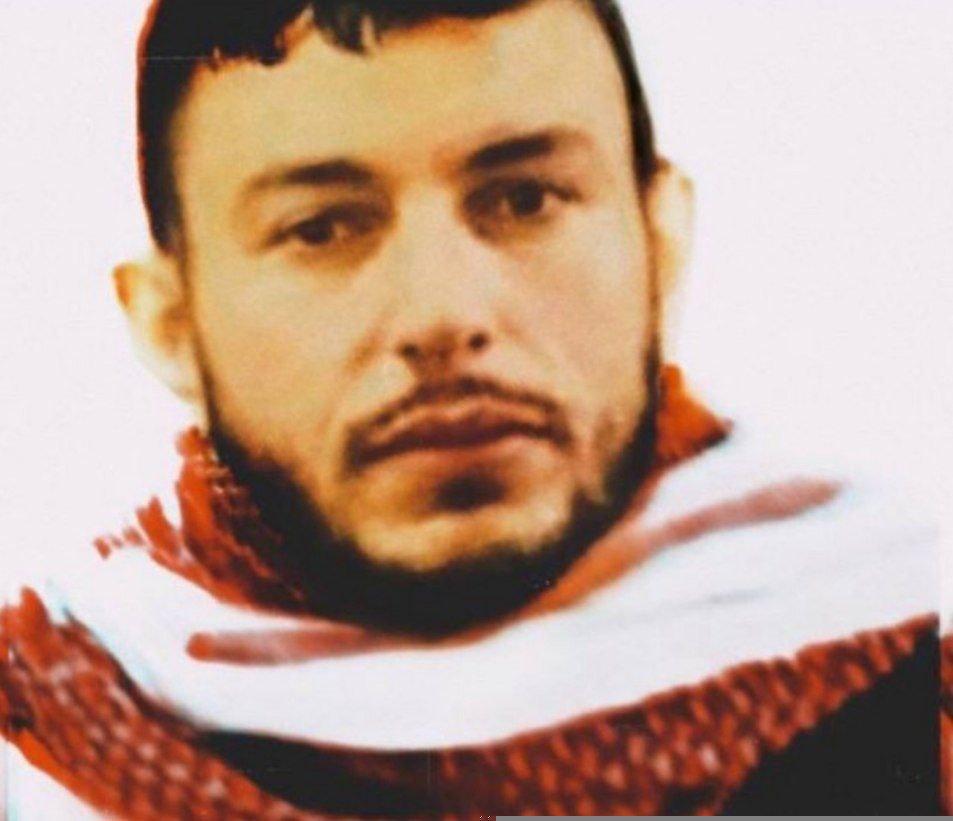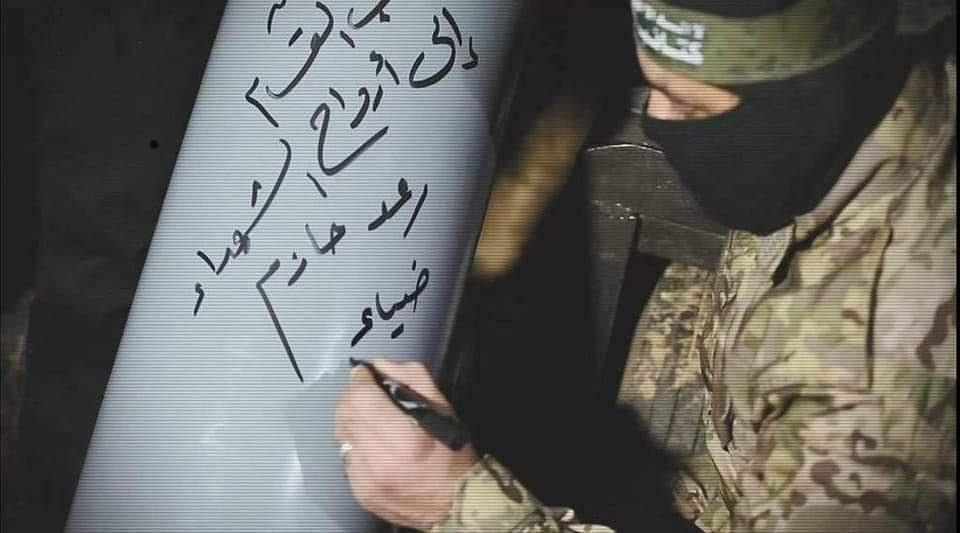
Around nine o’clock on the evening of Thursday, the 7th of April of the current year (2022), specifically on Dizengoff Street in the colony of “Tel Aviv,” the young man, Raed Khazem, was walking with steady and calm steps on the roadside. It is not difficult here to guess what he was thinking. We know our youth, our fedayeen (self-sacrificing fighters), so certainly it was a spiritual moment, in its faith-based meaning, that is to say, his connection with the absolute, that is to say, with God. But also in its other meaning, as an opposite to the material, for the self-sacrificing act in one of its dimensions is a voluntary renouncement of the mere physical existence of the executor, the ultimate degrees of altruism that a human can reach. From here, we understand the starting point of the eternal philosophical dilemma of all human societies around the magic of the concept of “martyrdom.”
Raed continued his steps as he saw human beings living their ordinary nights, but what people? The colonizing human beings. The worst types of human beings, indeed of living creatures, not because they are killers, or criminals, but because the material and physical existence of these human beings is a colonial existence, a chemical compound, of atoms and cells, each molecule of water within each cell in them, every element in them—hydrogen, oxygen, carbon, calcium—is a looted and stolen atom, from other humans, from us, the colonized.
However, this is not what Raed saw. Rather, when you walk in the middle of a colony like “Tel Aviv” and on a street like Dizengoff, you see manifestations of the practices of colonial luxury in all its forms. One of the cameras captured Raed as he crossed one of the streets; this camera was filming a settlers’ protest, about something trivial, we do not know what it is, but it is certainly something trivial, a luxury of life. He continued to walk, he saw the finest foods, people eating excess calories for the hunger of those besieged in Gaza, Lebanon, and the Levant. He heard music coming out of the shops, people sipping drinks, chatting and the sound of their laughter rising, a young man and woman on a romantic date murmuring their conversation, a group talking about jobs or a problem with a boss, a summer plan travel, the illness of his cat or the new food that it didn’t like, or searching for a new consumer adventure, perhaps a new bag or a new device. Amid this noise, Raed grabbed his locally-made “Carlo” gun, after hiding it under his thick coat, and opened fire.
What does it mean to come from Jenin and open fire in “Tel Aviv”? It is the dialectic on the land of Palestine—the camp and the colony. In a world divided between an imperial center in the north and exploited peripheries in the south, there is in Palestine what is not found in any other place on the planet. For here is the contact point, the isthmus between the first and the third worlds, between wealth and poverty, between the occupier and the occupied. You emerge from the alleys of the camp, where death is a daily practice, inherited, part of the DNA of the society, or as the martyr Nizar Banat says, “We are a society where martyrdom for us is a culture.” Then, within minutes, you enter the colony, you see life as a daily practice, the daily search for the ultimate ways to satisfy desires, where theft and consumption are a a culture. Here, you do not need theories, nor books, neither Lenin nor Marx nor any thinker or scientist or writer or otherwise. Here, we all stand to learn from the sons of the camp how to practice freedom and dignity.
The martyr Ghassan Kanafani explains the difference in the situation in Gaza compared to the West Bank through an objective historical comparison. He points out that during the Egyptian administration, many Gazans were trained, unlike the West Bank. And when Gaza was occupied, there were still cells of fedayeen (self-sacrificing fighters), while King Hussein handed over the West Bank to the zionists “clean,” as he himself described it. The psychological factor in Gaza is different, as it is besieged, west by the sea, south by the Sinai, east by the the Naqab, and north by the enemy entity. Kanafani add that during the first months of the occupation, the operations of transferring weapons, men, and money to the West Bank were easier, so they could not resist the development of counter methods against the zionists. In contrast, the situation in Gaza was harder and stricter, which forced the Palestinians there to adopt more effective tactics. Another factor was the network of salaries paid by the Jordanian regime, the method by which regimes maintain loyalties. The “israelis” also paid money. Kanafani confirms here that this does not mean that Palestinians in the West Bank have abandoned the option of resistance, or that they were against it, but these factors made the process of the emergence of the resistance work difficult and slower. As for Gaza, the situation was different, as their living conditions were harder.
With the two Intifadas, the “Carlo” reappeared, especially in Gaza during the first intifada, as a consequence of what Ghassan mentioned. It quantity increased, as its source was the warehouses of the Egyptian army. In the West Bank, as in the Gaza Strip, it was like other weapons, buried in the soil on hard days, to be resurrected again with the uprising of resistance work. This is the first aspect of the symbolism of the “Carlo”. The simple Swedish weapon, manufactured during the 1940s, was later produced by military production lines in Nasser’s Egypt until the end of the 1970s. It accompanied the Palestinian in hiding and burial over bitter decades and never abandoned him, only to be spotted by the photography lenses on the arms of the resistance fighters time and again, even at the beginning of the millennium. In a review of the weapon of the resistance fighters during the great battle of Jenin in 2002, the activist Jamal Huweil, one of the participants in the epic, documented about ten “Carlo” pieces, making it the most common weapon. The first aspect of this weapon represents the truth of the line “no power in the world can take my weapon out of my hand” (“The Great Jenin Camp Battle 2002: The Living History” 2022, Jamal Huweil, Institute for Palestine Studies).
Returning to Raed, with his operation a question arose: Why the “Carlo”? Especially since the martyr appeared in scenes with other weapons. The answer here leads us to the other aspect of this weapon’s symbolism. After the enemy’s so-called “Defensive Shield” operation, and the new “Cleaning” operation of the West Bank, with complete zionist control and the beginning of security, social, and economic engineering of the West Bank, the “Carlo”, due to its simplicity, became a symbol of creativity and manufacturing from nothing. Therefore, it evades the watchful eye of the “israelis” and their agents in the [Palestinian] Authority of security coordination. Its small size also allows its bearer to bypass surveillance measures. The distinction of this weapon, at this time, and in a region where zionist colonialism has accumulated centuries of experiences from other colonizers in controlling peoples, reinforced by unprecedented technological advancement in human history, allows us to understand the scenes and images of martyrs like Raed Hazem, Mahmoud Kamil, and Ashraf Na’alwa differently, within the context of a five-century equation of white colonialism over the planet.

Conclusion: A hundred years of fighting
After the martyrdom of the martyrs Aboud Soboh and Mohammed Al-Azizi, a picture appeared showing the mothers of the martyrs of the clash standing in front of a mural inside Al-Azizi’s room. Perhaps the observer of the picture in all its details should notice and remember one of the most prominent war strategies of leader Mao Zedong: “Resistance fighters must move among the people like fish in the sea”. That is, the popular cradle of the resistance must be the water without which the resistance fighter cannot swim and continue.
Throughout the years of struggle, the zionists succeeded in drying up the seas on the Palestinian fighter, and playing on the contradictions due to the deficiencies and shortcomings of the Palestinian revolution in Lebanon and Jordan. But one of the most important reasons for the success of today’s resistance movements is that the Palestinian is fighting on Palestinian land, through a Palestinian society, in a Palestinian sea. The “Carlo,” with its dual symbolism—preserving it for decades or and then creatively manufacturing it—indicates the continuity of this fight. From the British, then the zionists, and beyond the zionists, the fight has continued for a hundred years. If this picture of the mothers conveys any message, it is that the bet on the drying up of this sea is impossible, and the zionists have nothing to do but to record year after year.